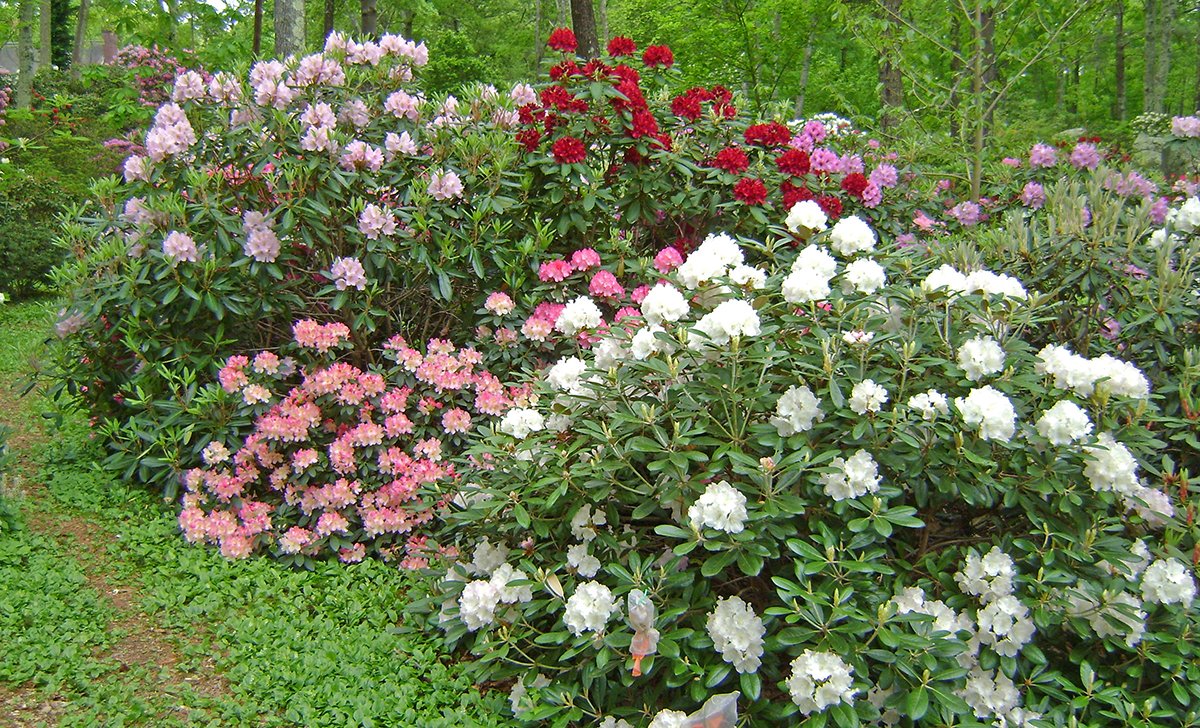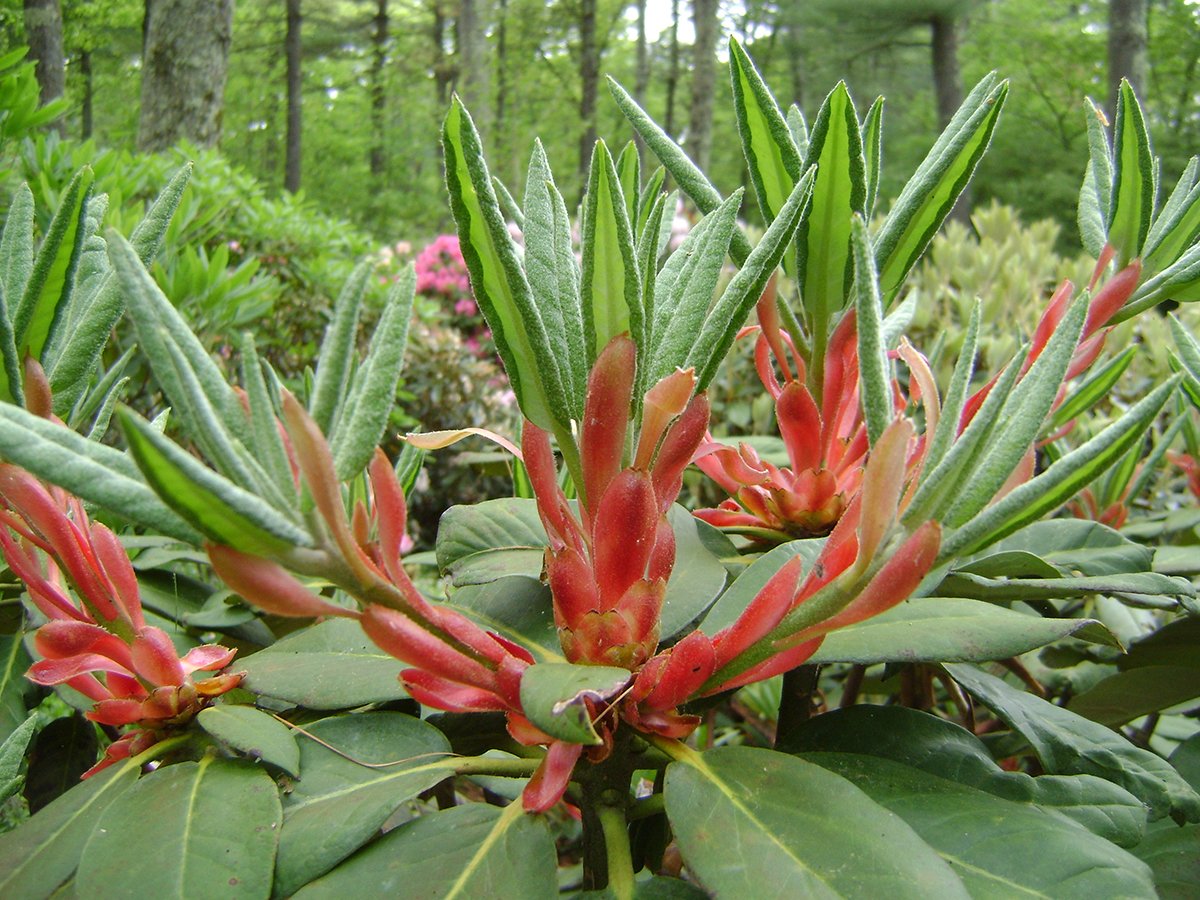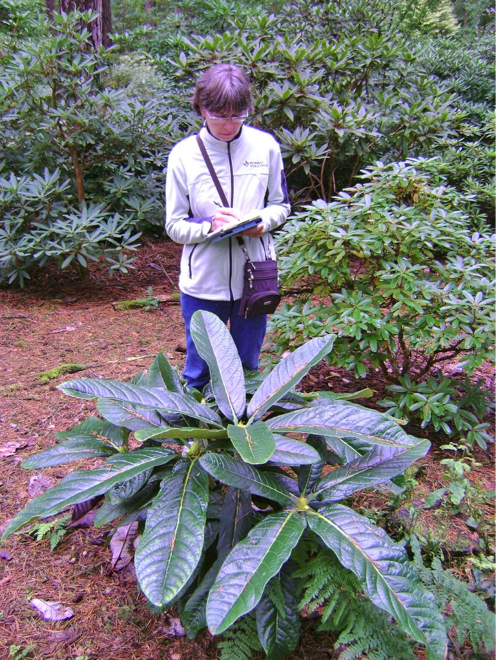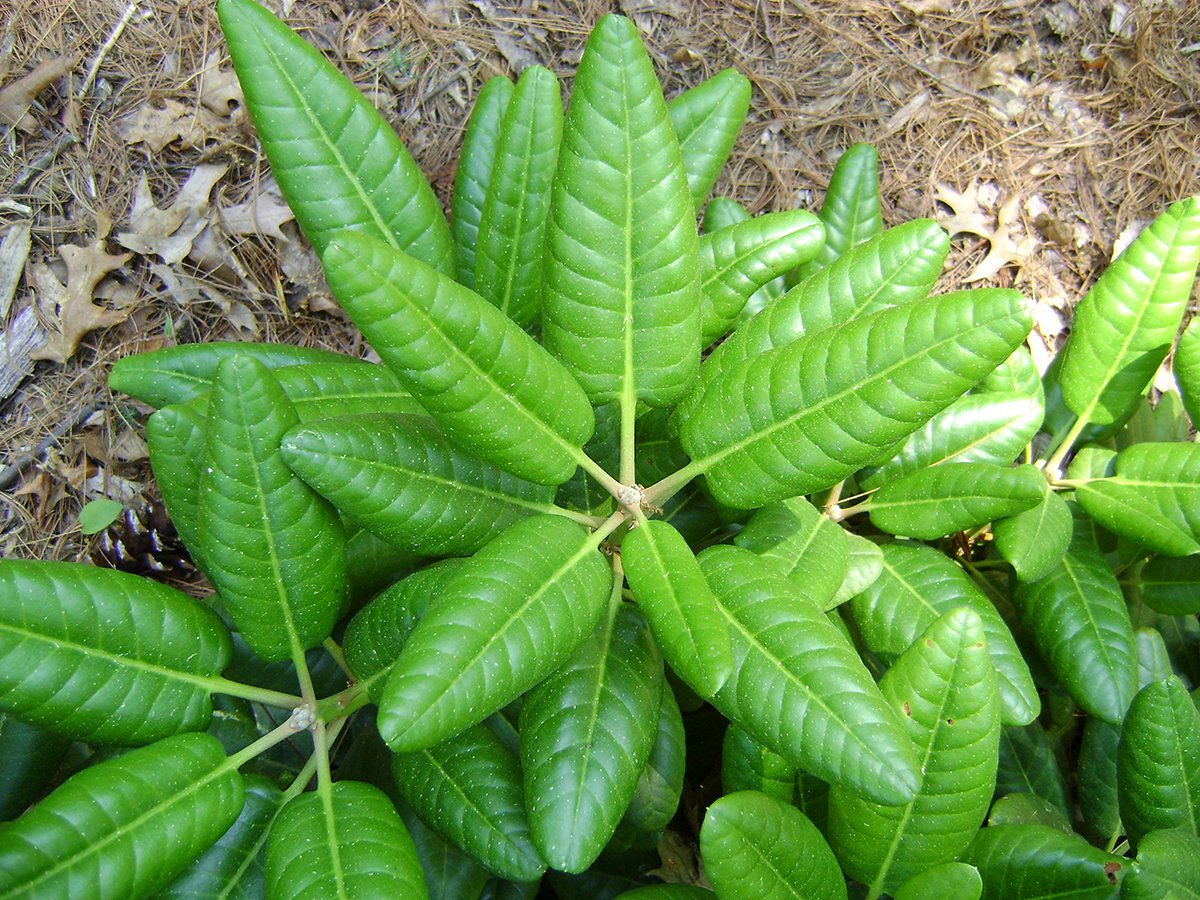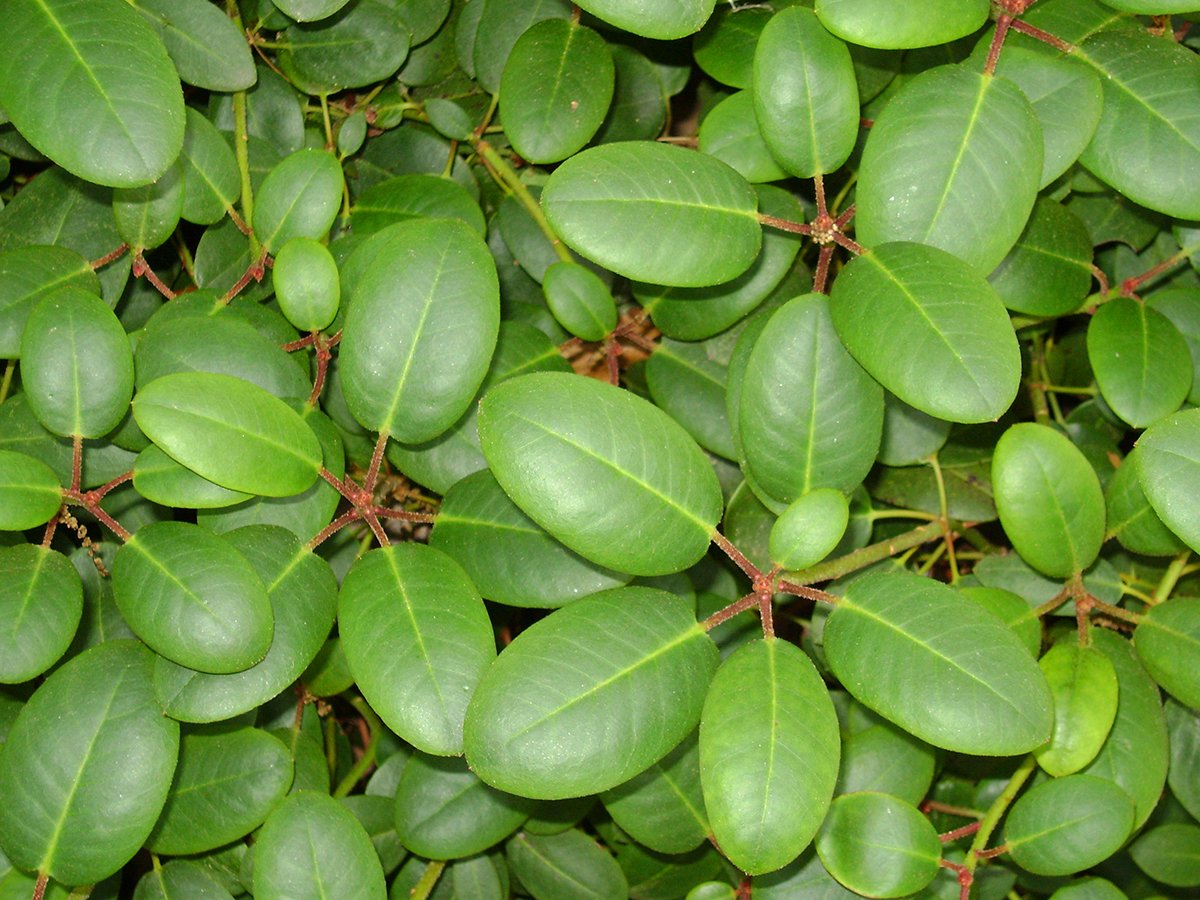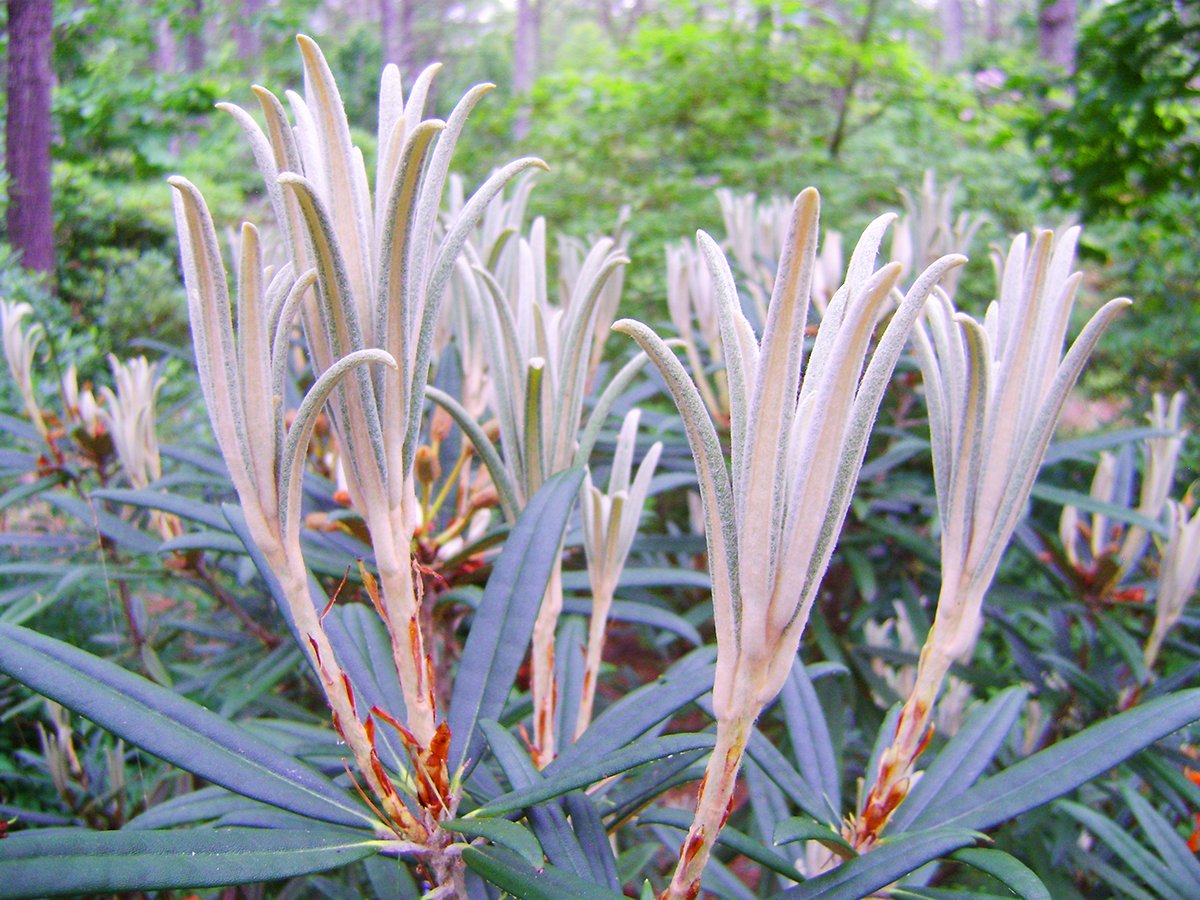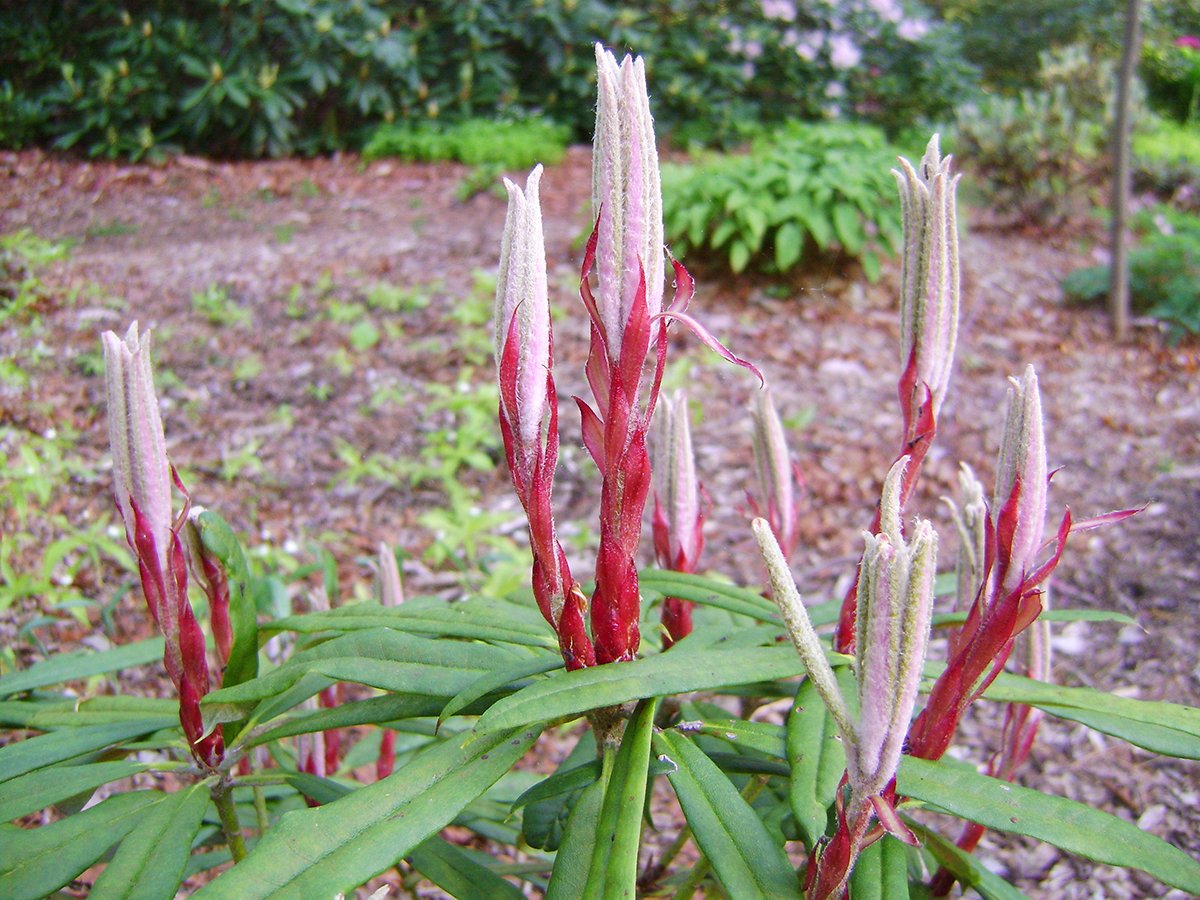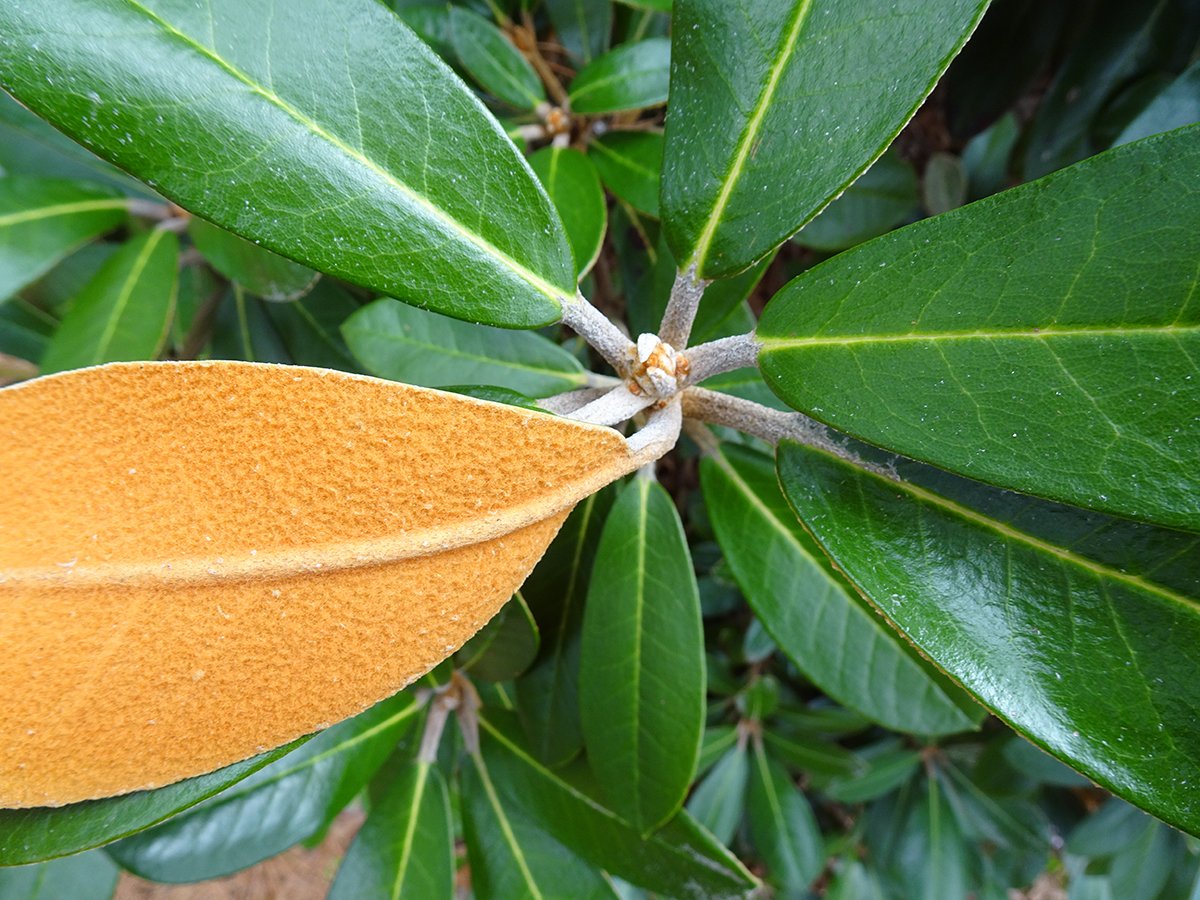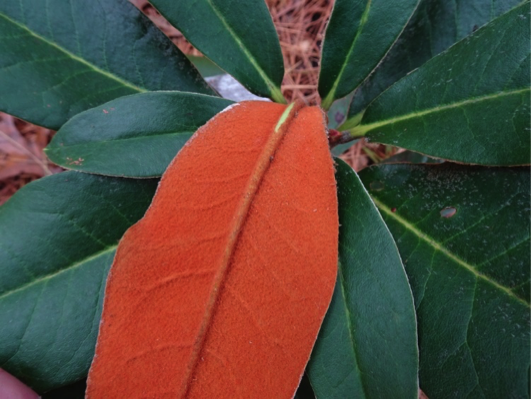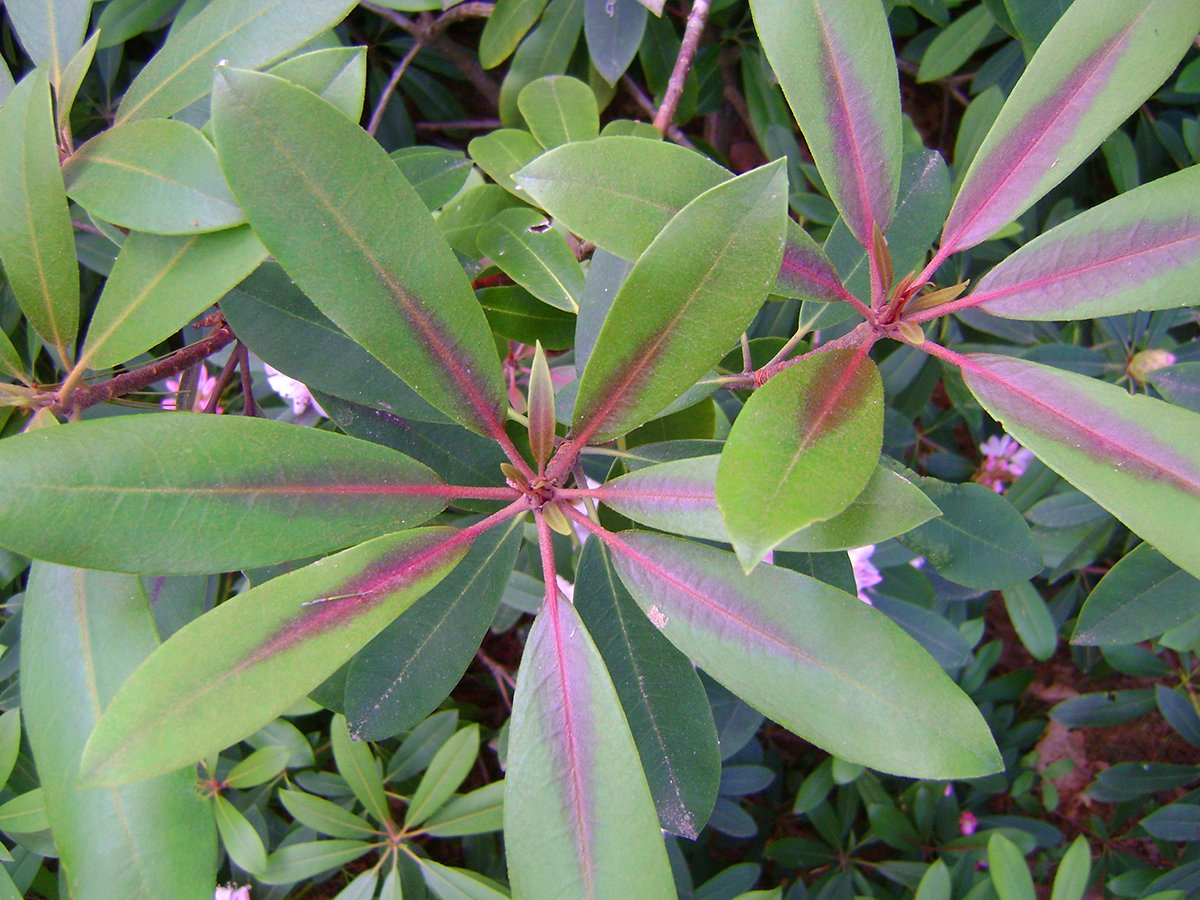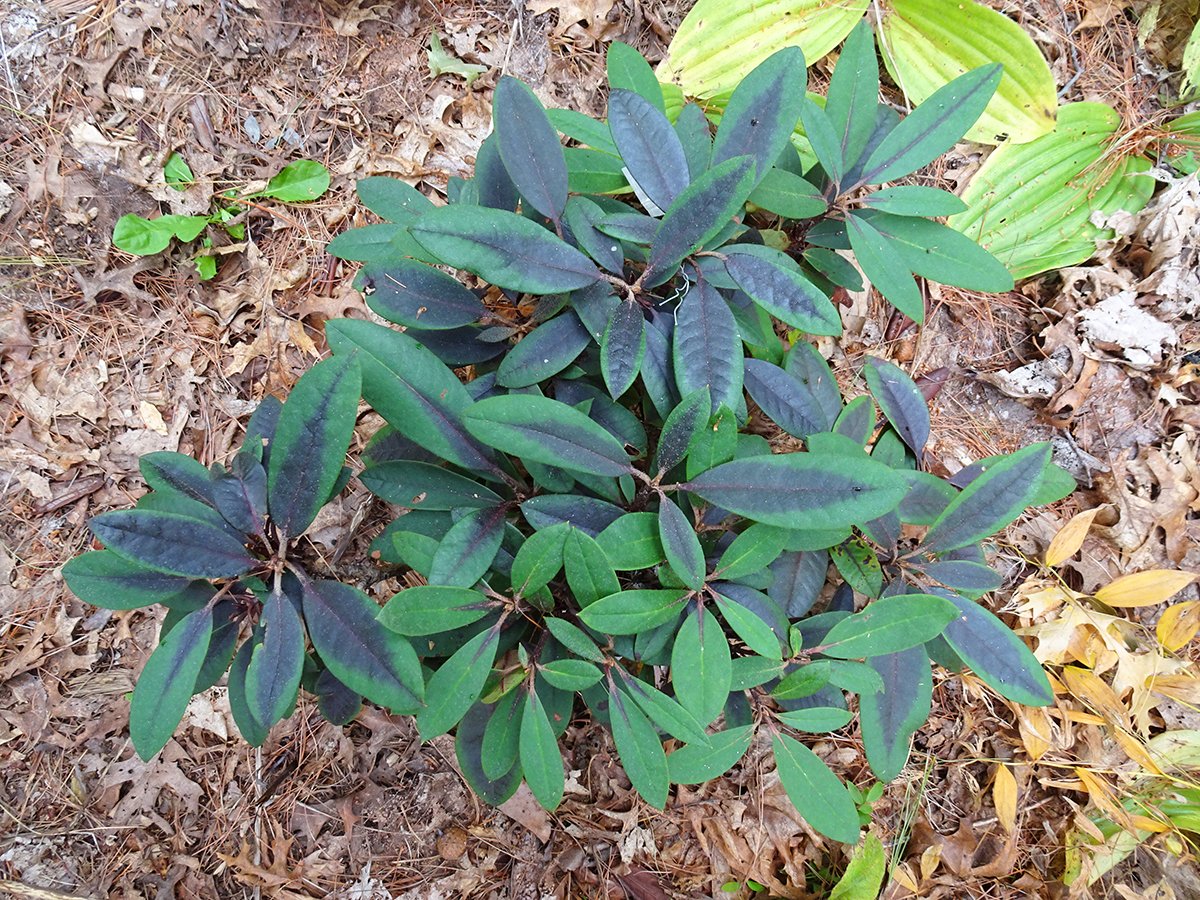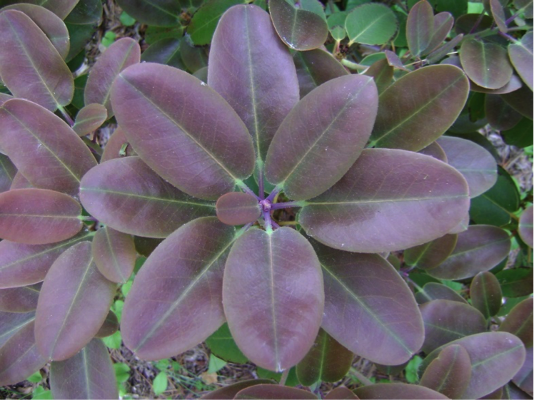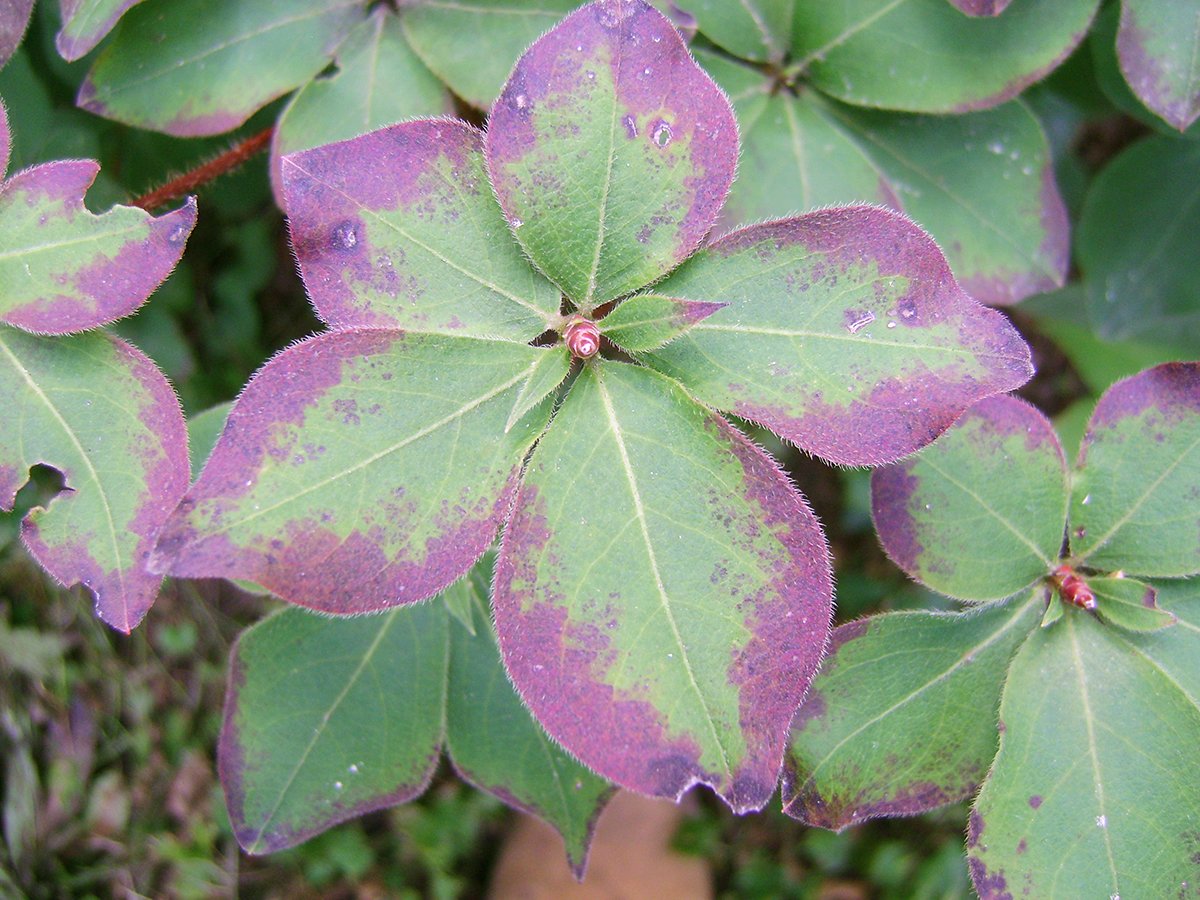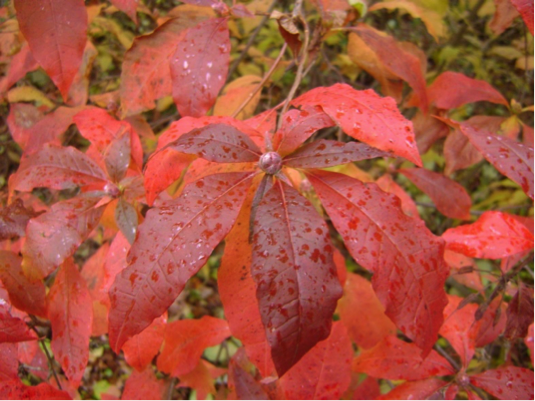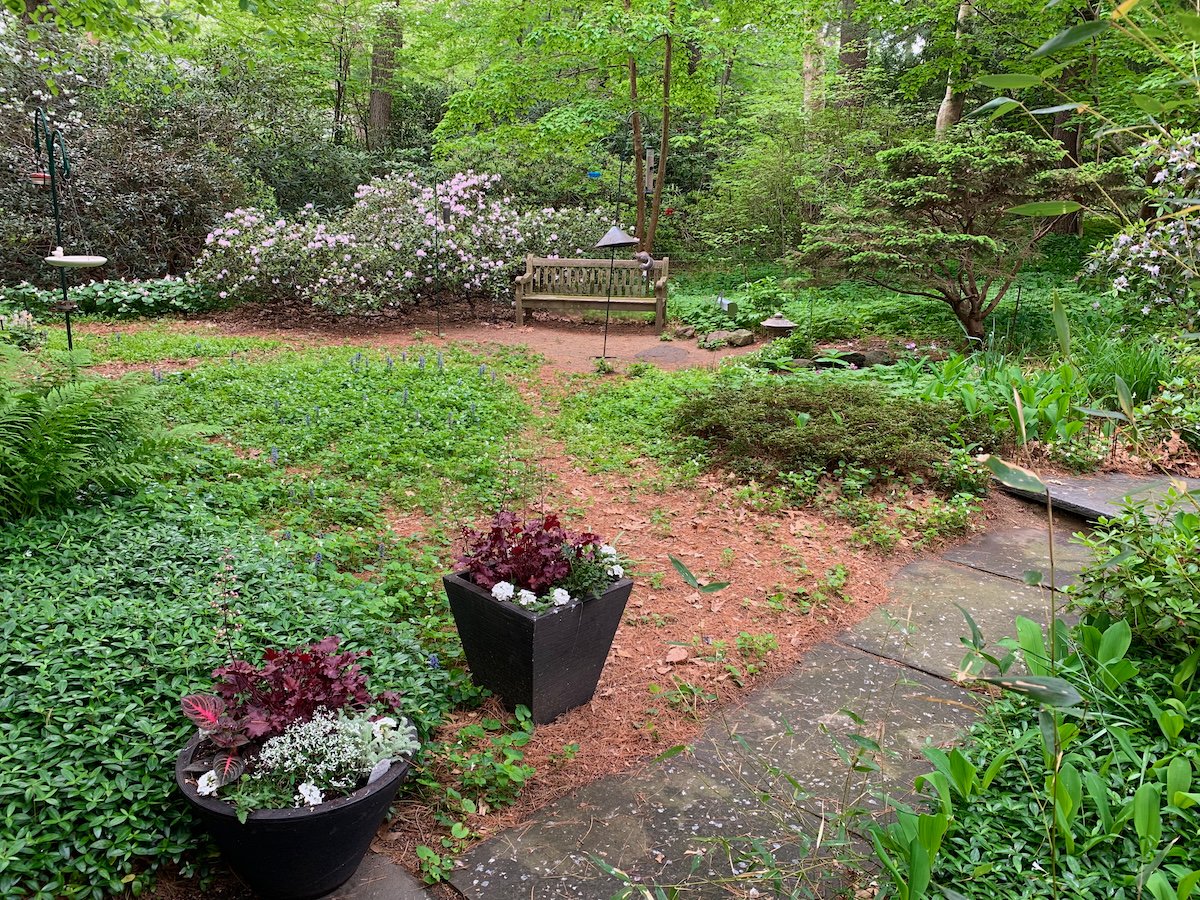Rhododendrons with Attractive Foliage
/By Joe Bruso, President, Rhododendron Society of America, Massachusetts Chapter
Rhododendrons are very popular spring-blooming shrubs with flowers in most colors. The larger-leaved types available at garden centers bloom primarily in May, while most of the smaller-leaved types bloom in April. Once the colorful blooms have faded, these plants are generally thought of as just green bushes. What if they could be a focus of attention for more than the 2-4 weeks during which each individual plant is blooming? Fortunately for those of us who love this genus, there are many plants that have attractive new growth and foliage that makes them a focus of attention all year. While most long-time rhododendron growers know this, it may not be so well known among our newer members. This article provides an introduction to some of these plants.
New Growth
For some rhododendrons new growth can rival the blooms themselves for color and attractiveness. It can be equivalent to a second bloom period, except sometimes lasting much longer than the blooms themselves. For such plants, attractive color and texture can be seen on new shoots, bracts on those shoots, and hairs on the stems and leaves. Bracts are modified leaves that originate as inner bud scales – the small, overlapping structures that protect dormant buds. When these buds begin to grow, the bracts expand to look like small leaves, becoming very colorful, typically pink to bright red. Bracts are temporary, withering and falling off as the new growth continues to expand and mature. Some of my favorites include hybrids that have the species Rhododendron rex, R. macabeanum, and R. strigillosum in their parentage. Although these species themselves are too tender for much of New England, they pass their colorful attributes on to their hardy hybrid progeny. R. auriculatum can be grown as-is in much of New England, providing very dramatic late new growth.
R. auriculatum (left) and R. macabeanum hybrid (right) new growth showing colorful bracts
Foliage Shape and Size
A number of rhododendron species and hybrids have distinctively shaped leaves. At their extremes, leaves can range from perfectly round to extraordinarily long and narrow.
Large Leaves
Some rhododendron species have leaves significantly larger than those of most rhododendrons grown in our area. Although they are not hardy enough to grow in the colder parts of New England, many hybrids between these “big leafs” and hardy rhododendrons have been made, resulting in hardy hybrids that approximate the look of the species. Mostly robust growers, these hybrids need space. One of the features found in some of these hybrids is an interesting texture to the leaves. One of my favorites is an R. rex hybrid with the hardy species R. brachycarpum.
R. sinogrande – very large leaves but tender, in UK garden (left), R. brachycarpum x R. rex (hardy “Big Leaf” hybrid) with textured leaves (right).
Round Leaves
Several rhododendron species have almost perfectly round leaves. They range in size from less than 1” for the tender species R. williamsianum to several inches in diameter for two recently introduced and hardier species, R. yuefengense and R. platypodum. One of the best williamsianum hybrids for our area is ‘Minas Grand Pre’, which is a hardy, slow growing mound with attractive, pink bell-shaped flowers. Hybridizers are working hard with the other species mentioned and are producing some very attractive, round-leaved plants with much larger leaves than ‘Minas Grand Pre’.
Rhododendron ‘Minas Grand Pre’, R. yuefengense (left) and R. yuefengense x R. platypodum (right).
Narrow Leaves
Several species have long, narrow leaves. The best example of this characteristic is found in R. makinoi. It is very hardy in our area, and has many other desirable characteristics besides the leaf shape, including silvery hairy new growth, compact habit and retention of leaves for several years. It is one of my favorite species, both as-is, and for use in hybridizing.
R. makinoi (left) and R. makinoi x R. strigillosum (right) showing narrow leaves and colorful, hairy new growth.
Hairy Foliage
Attractive hairs on stems and foliage (called indumentum) is perhaps the trait that most excites rhododendron foliage enthusiasts. These hairs come in a wide range of colors. They can appear on all parts of the new growth: expanding and mature stems, and both the upper and lower leaf surfaces. On the upper surfaces, hair color can be a bit muted, ranging from pure white, silvery, blue-green and muted burgundy, but also through light rusty-orange.
Hairs on the upper leaf surface can last for several months with rain gradually wearing them off. Examples include R. yakushimanum and R. makinoi and their hybrids, and R. bureavii and R. pachysanthum hybrids. R. yakushimanum was one of the first species introduced into New England that showed these characteristics. It has been extensively hybridized so there are many hybrids available, some of which can be found at local garden centers. Two of the more common and attractive hybrids are ‘Mist Maiden’ and ‘Ken Janeck’.
Rhododendrons grown for foliage showing range of hair color on upper leaf surfaces. R. ‘Golfer’ appears in the foreground, R. makinoi behind that.
In contrast to hairs on the upper surface, the color of hairs on leaf undersides can be intense. A favorite group for this characteristic is R. bureavii hybrids which have a thick layer of orange-rusty-colored indumentum. The hybrid ‘Cinnamon Bear’ is an outstanding example. Some types hold their leaves at an angle or even upright, allowing the colored undersides to be viewed from a distance. Hairs on the leaf undersides are permanent, changing in color over time from pure white or light-colored to a darker color, often orange or reddish.
‘Cinnamon Bear’ (left) and ‘Cinnamon Bear’ x ‘Jade ‘n Suede’ (right).
Pigmented Mature Foliage
Some rhododendrons have deeply pigmented new leaves. A subset of these retain this pigmentation for an extended period of time. A great example is a form of the species R. fargesii called ‘Rudy Berg’. Its leaves retain their burgundy color for up to 2 months.
Another group of rhododendrons, selections of our native R. maximum and some of its hybrids, show what I call the “Red Max Effect”. Decades ago a small colony of R. maximum was found in the Appalachian Mountains showing an unusually high degree of red pigmentation in stems, leaves and flowers. These traits are passed on to some of its hybrids. Particularly noticeable are reddish leaf centers. This trait is visible all year long.
R. maximum (left) and R. maximum x R. adenopodum (right) foliage showing “Red Max Effect”.
“Red Max Effect” as seen in the flowers: bicolor pink truss in foreground, red truss in background, on the same plant.
A selection of the species R. neriiflorum called ‘Rosevallon’ maintains red leaf undersides throughout its life. This trait is passed on to a high percentage of its hybrid offspring. Several named hybrids have been marketed, including one called ‘Everred’. While this and similar hybrids may be marginally hardy in parts of New England, I’ve made successful crosses between ‘Rosevallon’ and hardy plants such as R. ‘Janet Blair’ that produced fully hardy plants with red foliage.
R. fargesii ‘Rudy Berg’ (left) and ‘Janet Blair’ x ‘Rosevallon’ (right)
Fall Color
Some rhododendrons display spectacular fall color before dropping some or all of their leaves. Deciduous azaleas, which are within the genus Rhododendron, often develop bright yellow to crimson color in the leaves before they drop. Similarly, many of the small-leaved type of rhododendrons (PJM being an example of this type) also develop bright colors in the older leaves before they are lost. R. quinquefolium, a species from Japan, often has picoteed leaves, both on new spring leaves and on fall foliage.
Fall Color: R. quinquefolium (left), R. vaseyi (right).
Conclusion
Rhododendron flowers are beautiful and are the primary reason most people grow rhododendrons, but consider selecting and growing plants for foliage as well. Colorful new growth can provide a second “bloom” season. Colorful hairs, leaf shape, texture and leaf size can add many additional months of interest to your garden. Of course, all of these rhododendrons bloom as well. Unfortunately, many of the foliage plants discussed here are not readily available from garden centers, but they can be obtained from some specialty growers, mail-order companies and from the Massachusetts Chapter’s Plants for Members (P4M) program. To find out more about P4M, contact one of the P4M chairmen listed on our website (MassRhododendron.org), including me at jpbruso@aol.com.
You Might Also Like


